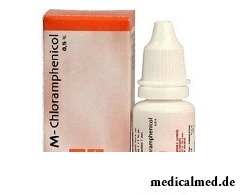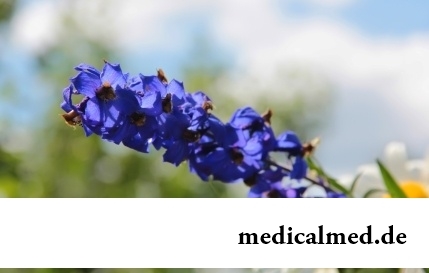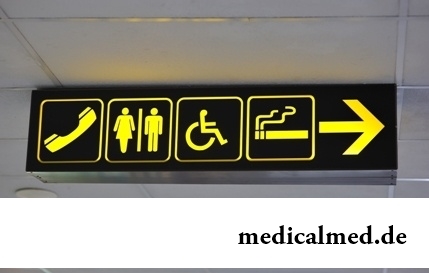





Atrophic rhinitis
Atrophic rhinitis or ozena is a chronic inflammation of a mucous membrane of a nose which is characterized by an atrophy mucous, and also the nerve terminations which are in it. Atrophic rhinitis happens two types – primary atrophic rhinitis and secondary atrophic rhinitis.
The microorganisms breeding at atrophic rhinitis exhale an unpleasant smell from a nasal cavity which the diseased does not feel at all as the center which is responsible for perception of smells atrophies. Patients usually complain of a nose congestion in spite of the fact that the nasal cavity is empty that can be caused as a result of an anesthesia because of an atrophy of nerves in a nose so the patient does not feel a flow of the inhaled air.
The disease most often occurs at women, and, as a rule, appear during puberty, however it can arise also at one-year-old age.
Such infections as syphilis, lupus or leprosy can lead to destruction of nasal structure and to atrophic changes. Atrophic rhinitis can also be result of old purulent sinusitis, radiation therapy of a nose or surgical removal of nasal sinks.
Reasons of atrophic rhinitis
Are the most common causes of chronic atrophic rhinitis:
- Extensive destruction of a mucous membrane of a nose and nasal sinks at nose surgery;
- Chronic sinusitis;
- Deficit of nutrients;
- Endocrine imbalance;
- Radiation;
- Granulematozny infections, such as leprosy, syphilis, tuberculosis and others.
Treat the major factors promoting chronic atrophic rhinitis:
- Atrophic rhinitis tends to begin during puberty;
- Caucasian and Mongoloid race natives of the equatorial Africa are more susceptible to a disease, than;
- Vitamin deficiency of A, D or iron;
- Infections of Klebsiella ozaenae, Proteus, diphtheroids and others;
- Autoimmune infections;
- The disease is descended.
Symptoms of atrophic rhinitis
The most common symptoms of atrophic rhinitis are:
- Nose congestion;
- Nasal bleedings;
- Anosmia;
- Dryness of a nasal cavity;
- Psychological depression;
- Greenish, black or yellow crusts in a nasal cavity.
Infectious atrophic rhinitis
Infectious atrophic rhinitis – a chronic disease which is shown in the form of a serous and purulent inflammation of a mucous membrane of a nose which consequence the atrophy of nasal sinks and deformation of bones of a skull is.
Pyocyanic sticks, bacterium of Bordetella Bronchiseptica and Mycoplasma are considered as the reasons of infectious atrophic rhinitis.
Symptoms of infectious atrophic rhinitis are sneezing, gradually increasing cold and conjunctivitis at the normal or increased temperature. Patients are uneasy, shake the head, they reduce appetite and they sharply grow thin. Further symmetry of both sides of a jaw is broken, tuberosity, in the beginning unilateral, and then bilateral appears, there is a softening and a curvature of a nasal partition to the right or left side. Under eyes edematous bags, puffiness and paresis in the head appear.
Infectious atrophic rhinitis is treated by means of washing by weak solution of iodine, weak solution of broth of garlic, permanganate potassium with the subsequent introduction of a lysozyme, penicillin and streptomycin.
Treatment of atrophic rhinitis
Treatment of atrophic rhinitis can medicamentally be performed or by means of surgical intervention.
Medical treatment of atrophic rhinitis is included by the following possible procedures and the used drugs:
- Nasal irrigations of a nasal cavity normal saline solution;
- Nasal irrigations and removals of crusts with use of alkaline solutions;
- 25% of glucose with glycerin are applied on a mucous membrane of a nose to suppress growth of fetid proteolytic microorganisms;
- Local antibiotics, such as chloramphenicol;
- Oestradiol and D2 vitamin;
- Oestradiol spray;
- System streptomycin;
- Potassium iodide;
- Extract of a placenta is entered into a submucosa;
- Jung's operations;
- Narrowing of a nasal cavity, submucosal administration of teflon paste, section and medial shift of a sidewall of a nose;
- Transfer of a channel of a parotid gland in a genyantrum or a mucous membrane of a nose.
The stomach of the person not bad copes with foreign objects and without medical intervention. It is known that the gastric juice is capable to dissolve even coins.

Olive oil – the product capable to make a powerful contribution to health of the person if it includes it in the diet. Rich vitamin...
Section: Articles about health
During foot walks blood moves on vessels more actively and one and all bodies are supplied with a large amount of oxygen. It affects the state of health of the person very positively....
Section: Slideshow
Many of us, probably, noticed more than once that from intellectual loadings at some point the brain as though "overheats" and "assimilation" of information is strongly slowed down. Especially this problem urgent for persons of age becomes more senior than fifty years. "Already badly I think", "the head will burst now", "memory as if is disconnected" - here that wants to be told at the time of information overload....
Section: Articles about health
Obesity is called by a disease of 21 centuries, for the last 100 years by the number of the people suffering from excess body weight, considerably increased...
Section: Articles about health
The sudden heat on all body which is followed by perspiration and a cardiopalmus – the phenomenon familiar to many people. Most often such states called by "inflows" result from nervous or physical overworks and disappear right after rest. Odn...
Section: Articles about health
According to data of World Health Organization, the cataract is diagnosed almost for 7% of the population of Earth. The statistics of incidence is considered not full as at an initial stage the illness, as a rule, does not cause to the person of special inconveniences, and many diseased sees doctors not at once. The cataract is not only one of the most widespread ophthalmologic illnesses, but also the reason of a half of cases of loss of sight....
Section: Articles about health
It is impossible to imagine human life in which there would be no plants. Practically in each apartment and any of productions...
Section: Articles about health
The majority of gynecologic diseases prove three main signs, each of which speaks about need of a visit to the gynecologist. Certainly, it is possible to establish the exact diagnosis only after inspection, but on the basis of some signs it is possible пр...
Section: Articles about health
The phenomenon of improvement of a condition of the patients at administration of drugs who are not containing active agents, so-called effect of placebo is known long ago. At the end of the 18th century the American doctor Perkins began to treat people the "miracle" sticks made of alloy of steel and brass. Was for several minutes to press such subject enough to a sore point that it became much easier for the patient. Having suspected Perkins of charlatanism, his colleagues tried to repeat "miracle" by means of sticks, steles...
Section: Articles about health
What they, women? Beautiful, gentle, passionate and at the same time windy, gusty, and nervous. And what is stranger: all эт...
Section: Articles about health
To look healthy and means well-groomed not only to be pleasant to people around, but also to feel strong, sure and taken place. Specialists in the field of cosmetology quite often note that whether not all women are able to look after skin...
Section: Articles about health
The technique of acupuncture (acupuncture) is used in the medical purposes more than three and a half millennia. It is eurysynusic and recognized as official medicine in the majority of the developed countries of the world. Influence by fine needles on so-called points of acupuncture contributes to normalization of a metabolism and hormonal background, activates protective forces of an organism, has anesthetic and antiinflammatory effect, stabilizes a condition of mentality....
Section: Articles about health
Practice of hypnotic impact on consciousness of the person contains about two millennia. During this time scientists were in time a lot of things узн...
Section: Articles about health
The fatigue, sleep debt, disturbances of food, bad mood, vagaries of the weather – all these circumstances badly affect our appearance. Especially the person suffers: skin becomes flabby, loses healthy color, becomes covered by wrinkles, zones of hypostases and t appear...
Section: Articles about health
New year, wedding, birthday, office party – an occasion to drink at the Russian person will always be. How to reduce a negative impact of alcohol by an organism and to avoid a condition of strong intoxication? The most correct council – to refuse the use of alcoholic drinks. Council is true, but not always feasible. We offer several advice which will help you in cases when it is impossible to avoid alcohol intake....
Section: Articles about health
The saying "the rich do not know how the other half lives" is known to all. In a broad sense it is that we can not always understand the person, about...
Section: Articles about health
For many spouses the question of planning of a family is one of the main. The problem of the choice of effective and safe contraceptives at the same time comes out on top. Russians still not often resort to operation of a vasectomy extremely popular in the USA...
Section: Articles about health
Food with the increased content of sugar is attractive to most of people - it is scientifically confirmed fact. Business here not in intemperance or dissoluteness: the sweet food is associated since childhood with feeling of rest and safety which tests the kid when it absorbs maternal milk. Besides, getting into a human body, sugar strengthens production of "happiness hormones" which all of us so need. And still life of sweet teeth seldom happens cloudless: their too big loss...
Section: Articles about health
It would seem, about it there can be no disagreements: water is necessary for a human body for normal zhiznedeyatet...
Section: Articles about health
Hemorrhoids – extremely widespread disease. Periodically arising inflammations and bleeding of hemorrhoidal nodes cause serious discomfort to nearly fifteen percent of adults. Meanwhile, having a clear idea of the aggravation reasons...
Section: Articles about health
Each person has easy indispositions which he transfers "standing", trying not to ask for medical care. Arguments at the same time are adduced same: "it is a trifle, itself will pass", "I have too many important issues", "there are no wish to spend time for doctors", etc. At good shape of health, normal working capacity and lack of suspiciousness dislike for complaints to such problems is quite natural. It is not the most correct, but very widespread type of behavior. I am glad...
Section: Articles about health
There is a lot of fans of beer in our country. Statistically, on each average Russian (including women and children) in...
Section: Articles about health
The next flu epidemic leads to the next panic, from year to year we give in on these manipulations: professionally alarming voice of the announcer in news, reports with calculation of the died patients, an interview with people in white dressing gowns and advertizing of anti-influenza means ра...
Section: Articles about health
The climax, or menopause is the normal process of the termination of genital function of the woman which is followed by serious hormonal changes in an organism. Usually the menopause begins at the age of 50-55 years, but characteristics of this process are very individual. Factors of earlier approach of a climax are irregular sex life, numerous abortions, addictions, existence of endocrine, autoimmune and gynecologic diseases, frequent stresses and excessive hobby of diets...
Section: Articles about health
The naturopathy sometimes moves as the new direction of medicine, something like fashionable hobby, and there is nothing farther from the truth....
Section: Articles about health
Frosty air, fresh wind and easy snowball at most of Russians are associated with cheerfulness, health and cheerful entertainments on which our winter is so generous. But, unfortunately, cold season sometimes brings also troubles with health. It is not about a season...
Section: Articles about health
There comes the season of issues. Many Russians already dream of outdoor recreation, trips, beautiful seaside beaches. At this time there is no wish to think of problems with health and other unpleasant things, however there are subjects which require attention. In the summer repeatedly the risk increases to ache with some very dangerous illnesses, we also will talk about them today....
Section: Articles about health
